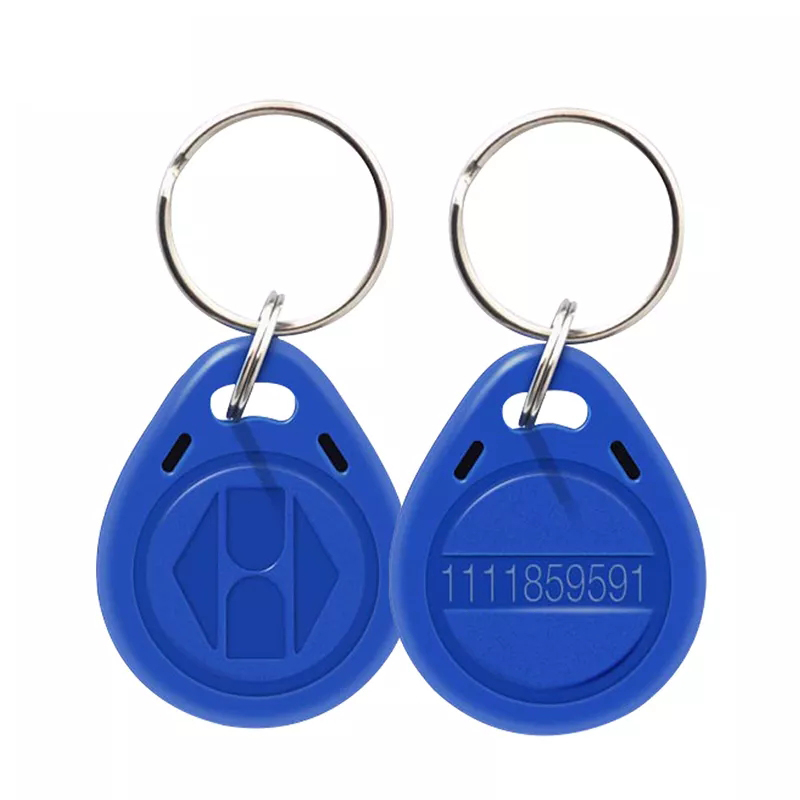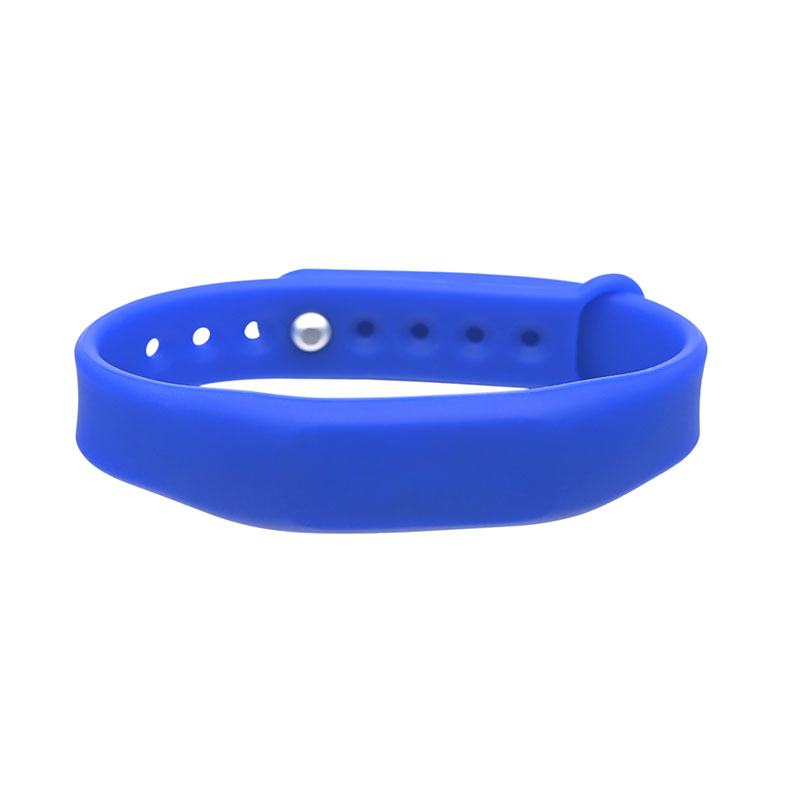
In today’s fast-paced, high-stakes medical environment, patient ID Wristbands are an indispensable component of the healthcare industry’s safety infrastructure. Whether barcode or rfid wristbands, these bands serve as a patient’s first line of defense against medical errors and misidentification. As a veteran in RFID Wristband solutions, I’ve witnessed firsthand how RFID technology in healthcare transforms hospital workflows, drives operational efficiency, and most critically, enhances patient safety. This blog explores why patient identification wristbands are non-negotiable today, especially with the rise of RFID-based systems.
Traditional identification methods—such as handwritten paper wristbands or simple ink stamps—have been largely phased out in modern hospitals due to human error risks. The adoption of plastic barcode wristbands improved data accuracy significantly. According to studies, about 83.9% of patients had correctly identified wristbands, while 11.9% contained errors and around 4.2% had no wristband at all.
The move from barcodes to rfid wristbands for hospitals represents the next frontier. RFID tags allow non-line-of-sight identification, realtime tracking, and seamless integration into hospital information systems (HIS) and electronic health records (EHR). This progression from barcode to RFID illustrates how healthcare institutions prioritize accuracy, speed, and integration.
Key Benefits of Patient ID Wristbands
1. Enhanced Patient Safety & Error Reduction
Prevention of medical misidentification: According to The Joint Commission (JCAHO), patient identification errors account for approximately 13% of surgical mistakes and 65% of transfusion mix-ups in the U.S..
Medication administration accuracy: A landmark study found that barcode usage prevented around 90,000 serious medical errors annually and cut medication error rates by 82% in select units.
RFID-powered improvements: Research indicates that implementing RFID systems in operating rooms increased patient ID verification from 75% to 100%, and improved physician time-out completion from 43% to 70%—instrument loss also dropped significantly.
These capabilities make it nearly impossible to administer medication or perform procedures on the wrong patient, drastically improving patient safety, lowering risk, and reducing liability.
2. Real-Time Patient Tracking & Workflow Efficiency
Non-contact tracking: Unlike barcodes, which require line-of-sight scanning, rfid wristbands can be read remotely—with multiple tags processed simultaneously—speeding up workflows .
Faster patient flow: RFID systems enhance admission, transfer, and discharge protocols. Fixed antennas or RFID zone scanners automatically register patient movement, eliminating manual check-ins and minimizing delays.
Enhanced staff allocation: As part of a real-time location system (RTLS), RFID tags improve staffing decisions by tracking patient locations and care demands at any given time.
This leads to smoother operations, reduced wait times, and a more efficient care environment—benefiting both staff and patients.
3. Accuracy of Data & Clinical Integration
Seamless EMR integration: rfid wristbands automatically sync with EHR/HIS systems, reducing transcription errors and manual data entry. This integration supports more reliable patient records and faster access to critical patient history.
Allergy and medication alerts: With RFID-enabled wristbands, nurses can instantly access a patient’s allergy profile, current medications, and treatment plan—preventing avoidable medical mistakes.
The result is more accurate, legible data at the point of care and timely clinical decision support, all of which contribute to better treatment outcomes.
4. Compliance, Standardization & Quality Assurance
Regulatory alignment: Organizations like JCI, FDA, and HL7 require that hospitals enforce strict patient identification standards. RFID Wristband systems help meet these benchmarks reliably.
Consistent clinical audits: RFID logs provide immutable audit trails of patient movements, medication scanning, and procedural checkpoints, helping ensure compliance and reducing risk during regulatory inspections.
By embracing RFID identification technology, healthcare providers can proactively satisfy quality and safety frameworks.
5. Cost Savings & ROI
Reduced errors = lower costs: Fewer medication mistakes, fewer avoidable adverse events, and less staff rework translates into substantial savings.
Asset and inventory management: rfid wristbands often form part of broader systems that also track medical devices, pharmaceuticals, and inventory—reducing loss, expiration, and duplication in purchasing.
Market insights: The global RFID in healthcare industry is projected to grow from approximately $6.9 billion in 2024 to $15.7 billion by 2030, at a CAGR of 14.6%—a testament to its expanding ROI potential.
Implementing rfid wristbands yields measurable savings, better resource allocation, and higher ROI compared to legacy manual systems.
6. Patient Experience & Safety for Special Populations
Fall and elopement prevention: RFID systems detect wandering patients, such as those with dementia or Alzheimer’s, triggering alerts if someone crosses secure boundaries .
Infant protection: Hospitals with infant security programs use paired RFID bands for mother and baby, which alert staff if they are separated near exits, preventing abduction or mix-ups.
Panic-button integration: Some rfid wristbands include programmable distress buttons to summon help for elderly or vulnerable patients automatically.
These features elevate patient safety beyond routine care and safeguard the most vulnerable populations.
RFID vs. Barcode Wristbands: A Comparative Overview
Feature | Barcode Wristbands | rfid wristbands |
Line of sight required | Yes – must scan directly | No – can read through clothing or at a distance |
Scanningspeed | One tag at a time | Multiple tags simultaneously |
Real-time tracking | No | Yes – supports RTLS, zone detection |
Integration with EMR/HIS | Manual scan/entry | Fully automatic and real-time |
Environmentalresilience | Prone to damage if wet or smudged | More durable, waterproof RFID tags available |
Cost | Lower upfront | Higher upfront, but better ROI over time |
Error reduction | Good improvement over handwritten bands | Superior accuracy and automation |
While barcode wristbands significantly improve accuracy over legacy paper systems, rfid wristbands deliver unparalleled automation, real-time tracking, and integration—making them the superior choice for hospitals committed to futuristic, patient-centric operations.
Real-World Case Studies & Evidence
Pratt Regional Medical Center (Kansas) implemented an RFID-based infant security system. Each mother-infant pair wore paired RFID bands. Tampering or instigation of exit breach triggers alarms and automatic door lockouts—effectively eliminating infant mix-ups or abductions .
CPCON Group’s implementation in a major healthcare institution transformed their workflow. rfid wristbands synced with EMR, fixed antennas tracked patient movement throughout zones, and a real-time dashboard improved visibility. The results: streamlined operations, faster care, better compliance, and higher patient satisfaction .
Literature reviews show RFID reduces medical and medication errors, improves identification rates, and enhances patient tracking in operating rooms and wards. RFID adoption rose gradually between 2017–2022, consistently demonstrating benefits in real deployments .
These examples support the view that RFID technology in healthcare isn’t experimental—it’s proven, scalable, and transformative.
Compliance & Standards: How rfid wristbands Meet Them
JCI accreditation requires rigorous patient identification protocols—RFID systems help hospitals meet and exceed these standards consistently.
FDA and HL7 guidelines around barcode-and-identifier requirements are satisfied and enhanced by RFID systems, which interface seamlessly with medication administration workflows and EHRs.
Data privacy and security: RFID tags and readers must comply with HIPAA-like regulatory frameworks. Modern RFID solutions use encrypted tag IDs and secure middleware layers to protect patient privacy.
Choosing compliant RFID Wristband systems shows commitment to quality assurance, regulatory readiness, and patient trust.
Future Trends: Smart Wristbands and IoT in Healthcare
Integration with IoT sensors: Emerging rfid wristbands embed temperature sensors, biometric data trackers, or falldetection alerts, feeding patient vitals directly into clinical dashboards .
Active vs passive RFID: Passive RFID is cost-effective and ideal for most ID/RTLS uses. Active RFID (battery-powered) extends range and real-time data capabilities—for critical care or remote tracking scenarios.
Smart wristbands in digital health: Future models will integrate NFC, Bluetooth Low Energy (BLE), temperature monitoring, and even positioning—all in a single wearable device .
Market growth: With the RFID in healthcare market expected to more than double by 2030, innovation around wearable healthcare tech and IoT wristbands will only accelerate .
Smart wristbands are poised to deliver even more critical patient data while further automating clinical workflows.
How to Choose the Right Patient ID Wristband Solution
a. Material and Durability
Select bands made from water-resistant, hypoallergenic materials—like PVC or TPU—that withstand moisture and tape changes.
b. RFID Technology and Frequency
Choose between LF, HF (NFC) or UHF depending on read-range, infrastructure, and interference requirements. Passive tags suit most hospital zones, while active tags are useful in larger campus or ICU settings.
c. Security and Privacy Features
Ensure the wristbands and system use encrypted identifiers, access controls, and secure middleware that complies with patient privacy regulations like HIPAA or GDPR.
d. Integration Capability
The RFID Wristband system must integrate effortlessly with existing EMR/HIS systems. Also assess whether it supports HL7 or FHIR standards for interoperability.
e. Vendor Qualifications & Support
Look for suppliers with proven hospital deployments, validation of regulatory compliance (FDA, CE), strong technical support, and scalability. In Singapore, for instance, Cadi Scientific has partnered with major hospitals like Singapore General Hospital to deploy active RFID temperaturemonitoring wristbands alongside location tracking.
Conclusion: Patient Wristbands Are Non-Negotiable
Patient ID Wristbands, especially those powered by RFID technology, have become essential in modern healthcare. They dramatically reduce medical errors, enable real-time tracking, and support compliance with regulatory standards. From improving patient safety and workflow efficiency to enabling smart IoT integration and future-ready clinical care, rfid wristbands offer far greater ROI than barcode alternatives.
For hospitals and healthcare providers committed to patient safety, digital transformation, and operational excellence, investing in a high-quality RFID patient wristband solution is no longer optional—it’s imperative.
Why Choose Us?
Established in 2010 – Over a decade of RFID experience
Full customization – RFID cards, wristbands, key fobs, and smart devices
High quality – ISO-compliant materials (ISO 14443, ISO 15693)
Secure solutions – Encrypted protocols and data protection
Flexible scalability – From startups to enterprise-level projects
Contact us today to learn how we can help streamline your inventory management with reliable, smart RFID solutions.





